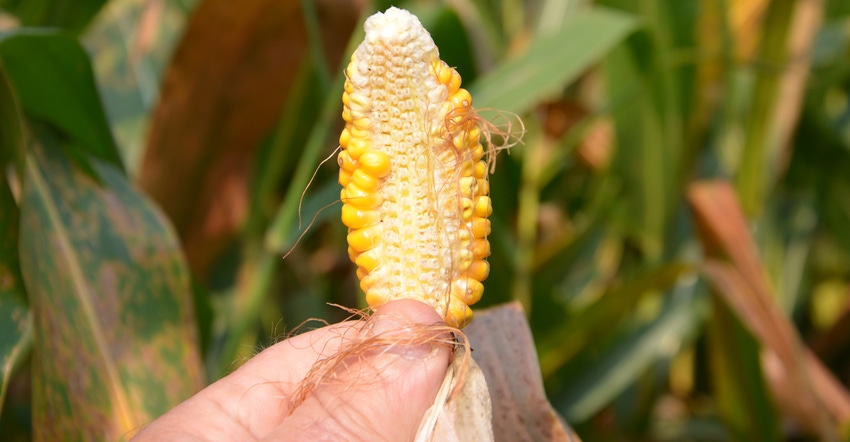December 29, 2017

2018 is still approaching, and it may be premature to talk about replanting corn. However, the new growing season is coming. You should have a plan of action ready in case you need to replant.
First things first — before you can plant corn, you must prepare a good seedbed. Even though I like early planting, you don’t have to be the first in your area to start. Once your planter is all checked out and you think you’re ready to plant, test the planter to make sure everything is working right.
If you have a lot of acres to plant, you need to start early. When you plant very early, chances are some acres may be affected by weather extremes, and you may have to replant. But replanting decisions should be based on facts rather than emotions. There’s no reason to tear up a field just because you don’t like the way the stand looks. You need to do plant counts.
Count plants
According to the Purdue University Corn & Soybean Field Guide, pick out at least three representative areas and measure 1/1000th of an acre, or 17 feet 5 inches in 30-inch rows. Count the number of normal seedlings. Multiplying by 1,000 gives the estimated population.
Uniformity of plant stand is important. Estimate the average length of gaps left by missing or dead plants. Some seedlings may be damaged or destroyed by seedling diseases like pythium or Stewart’s seedling blight.
Growth stage is also important. Other important things to consider are when the field was planted, planting population, expected replanting date, additional costs of replanting, maturity of the hybrid to be replanted, expected prices at harvest, expected grain yield, and moisture and test weight at harvest. All these factors will affect your replanting decisions.
Practical situations
Over the last 50 years, I’ve seen a lot of fields replanted. Often, the decisions were emotional and made on the field’s appearance.
During the last two years of Corn Watch fields, the cooperator tried to plant an earlier-maturity hybrid in gaps in the original stand. In a few spots, he planted corn 8 to 10 inches away from the original planting. It’s very hard to spot-plant with a 24-row planter.
Plants next to original rows produced nubbins and acted more like weeds that can’t be killed by a postemergence application of corn herbicide.
Still, he’s an excellent grower with an average corn yield of more than 220 bushels per acre in 2017. He estimated that in large areas where replanted corn produced excellent stands and there was no competition, replant yields were about 240 bushels per acre. He believes he should have replanted more.
However, it’s easy to have 20/20 vision after the season. The growing season of 2017 was long, with a late killing frost.
What if we had an early killing frost? 2017 also featured relatively cool weather and cool nights during grain fill, which helped late-planted corn.
Let’s hope for a great planting season in 2018 — one that requires no replanting!
Nanda is president of Agronomic Crops Consultants LLC. Email him at [email protected], or call 317-910-9876.
About the Author(s)
You May Also Like






